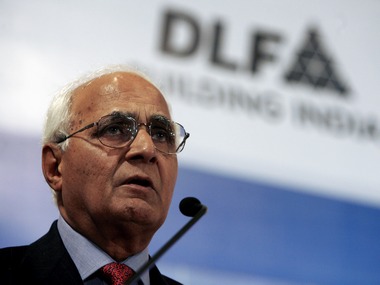DLF**,**the largest Indian real estate player, is not going to have it easy this year, despite the various distress sales. This is because these non-core asset sales may help in the short run, but the impact will be limited because of its continuing need for capital expansion.
Brokerage CLSA in its latest report has accorded a sell rating on the stock saying the realtor’s large asset sales may not be enough to reverse negative cash flows.
The analysts said the company’s 2011-12 annual report suggests that DLF’s operating cashflows from recurring business need to improve by Rs 2,900 crore between financial year 2012 and 2014 just to prevent the debt level from rising. “This would require higher sales, turn around in working capital and capex reduction simultaneously. Possible but a tough task,” the analysts said, maintaining a target price of Rs 180 on the stock.
[caption id=“attachment_446322” align=“alignleft” width=“380”]  Brokerage CLSA in its latest report has accorded a sell rating on the stock saying the realtor’s large asset sales may not be enough to reverse negative cash flows.[/caption]
On 30 June 2012, its debt was as high as Rs 22,680 crore.
DLF has been conducting a firesale of properties to bring down debts, and apart from the Worli land (now sold to Lodha for Rs 2,700 crore), it is in talks to sell its Aman Resorts (for Rs 1,500 -2,000 crore) and wind power projects (Rs 1000 crore). It wants to bring down debt by around Rs 5,000-8,000 crore by the end of this year.Until then, the company is unlikely to witness any meaningful reduction in its interest costs. CLSA, however, points out that these asset sales will only result in a Rs 3,000-3,500 crore of debt reduction in 2013. This is merely 12-15 percent of its total debt and lack of new launches implies revenue brought to books will slow even further.
According to market analyst PN Vijay, the Lodha-DLF deal will bring down the debt only by 10 percent, which is insignificant given its high unsold inventory. Moreover, the transaction was at a 35% discount when compared to Oberoi Realty’s land deal in Worli, Mumbai, (October 2011) and at a 15% discount to Indiabulls Real Estate (IBREL) land deal in Lower Parel (August 2010), brokerage Nirmal Bang had pointed out earlier.
Impact Shorts
More ShortsWhat’s worse is DLF’s free cash flow. Since these asset sales have not been supported by strong pre-sales, which continue to remain lacklustre,the company has not been able to generate a positive sustainable cash flow.
Says Mahesh Nandurkar, analyst at CLSA, “DLF has been consistently free cash flow negative in its recurring business.” The cash flows have deteriorated from negative Rs 1,400 crore in FY11 to Rs 2,500 crore in FY12 as the sales of the company’s key Gurgaon Phase V projects declined 21 percent year on year. The brokerage expects the cash flows to remain weak even in financial year 2013 due to delays in sales pick-up.
DLF in its 2011-12 annual report also said it expects the current economic and business environment to stay challenging over the next few quarters. This was evident from the company’s balance sheet. While fixed assets and investments were flat due to sale of office buildings, net working capital rose to Rs 1800 crore from the year-ago period, driven largely by land purchases and negative working capital. This is despite 40 percent of FY12 sales coming via plotteddevelopment, which were expected to improve the cash flows in the short term.
However, given the tough market conditions, DLF has decided on being conservative going ward. It has kept all big ticket land buying on hold and is now targetting only 8-10 geographies unlike the 35-40 cities at the time of its IPO.


)

)
)
)
)
)
)
)
)



